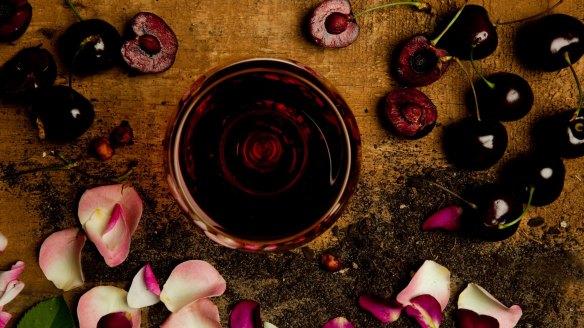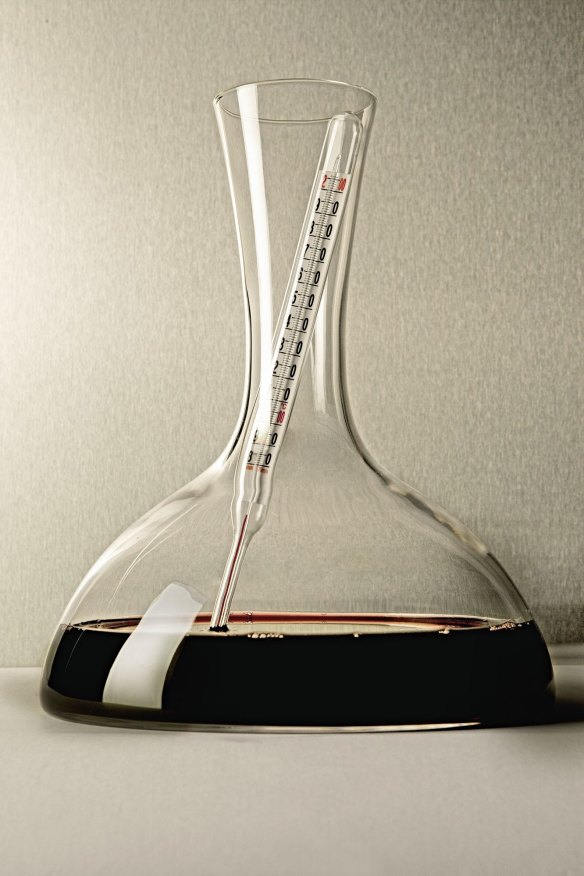How to drink red wine in summer plus 10 lighter varieties to try

Red wine conjures images of a night in. The fire is crackling, a big, hearty meal is braising, and you take a sip of wine that warms you from the inside-out. Red equals winter, essentially.
But it turns out that some reds actually make for perfect drinking as the weather heats up.
These tend to be lighter styles of wine – but don't be fooled by the term 'light'. These drops still pack a punch.
"By light, we mean texture in the mouth, not the flavour; we still want flavour and character," says Virginia Jacobs from Wine Taste Talk.
"We just don't want heavy tannins, heavy flavour and heavy mouth feel in summer."
Here are 10 warm-weather-friendly red varieties.
Pinot noir
The first go-to for a summer red is the popular pinot noir.
"A pinot noir from a cool climate like the Bellarine Peninsula, the Mornington Peninsula, New Zealand or the Yarra Valley will be a lighter style," says Jacobs. "They're often quite fruit-driven."
Rosé
Pink wine is everywhere this summer, especially when seafood is on the table. "The standard [of rosé] has improved: we're seeing drier styles with some complexity," says Jacobs. "A chilled sparkling rosé is great, too."
Sparkling shiraz
Sparkling shiraz has become a classic Australian Christmas wine because it goes so well with white meat like pork, but enjoy this red beyond the festive season.
"The bigger flavours are moderated by the bubbles and the chilled temperature it's served at," says Jacobs.
Tempranillo
"Tempranillo is a Spanish wine that can be light and have a lovely spice," says Jacobs. "It's traditionally served with tapas."
Grenache
"A grenache is not only beautifully light, but has a depth of flavour and is just so interesting," says Jacobs. "The McLaren Vale and Barossa Valley [produce] incredible examples."
Grenache is often paired with seafood and vegetarian dishes.
Sangiovese
"Sangiovese is a great Italian wine, and goes so well with summer foods such as antipasto and the charcoal notes of a barbecue," says Jacobs.
Merlot
"A merlot is light-bodied, fruit-driven and soft in tannins," Jacobs says. Merlot goes well with a range of barbecued and roasted meats.
Gamay
Often called a 'picnic wine', gamay (the same grape used to make beaujolais) is a fresh, fruity variety.
"It's a light, juicy, savoury style of red that's just delicious and has seen a resurgence in Australia lately," says the Tasting Glass' Andrew Graham.
Dolcetto
"A light Italian red that can have a little sweetness to it, and makes an easy-drinking summer red," Graham says. Serve dolcetto with salad or pasta.
Shiraz
While shiraz doesn't fit the profile of a light-bodied red, it's the exception to the rule.
"A rich, generous Barossa shiraz is the ultimate summer barbecue red," says Graham. "Smoky barbecue flavours are perfect with a shiraz or a grenache-shiraz blend."
To chill or not to chill?

That is the question.
We've always been told that reds are best at room temperature – but does that apply to the warmth of a summer Down Under? The short answer is no.
But you're not the only one making this mistake: Taylors Wines found that eight out of 10 Australians were serving wine between 22 and 24 degrees. The problem is that the old advice to drink reds at room temperature originates from chilly rooms in medieval France (14 to 16 degrees).
Yes, it's time to update that advice.
"In Australia, we tend to drink our reds too warm and our whites too cold," says Graham. "If you serve a red too warm, it tastes sweeter and more alcoholic."
"Ideally you'd serve a lighter-style, summer red between 15 and 18 degrees." (Note: Heavier reds won't taste good chilled.)
"When it's warm outside, put them in the fridge for half an hour before drinking. That small time in the fridge makes a massive difference."